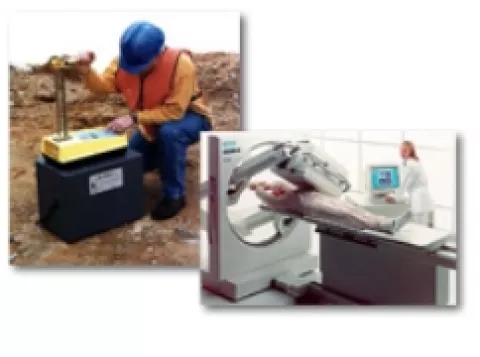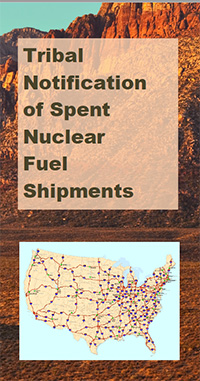Special Nuclear Material
On this page:
- What is meant by special nuclear material?
- Where does special nuclear material come from?
- Why is control of special nuclear material important?
- Regulations for Special Nuclear Material
What is meant by special nuclear material?
"Special nuclear material" (SNM) is defined by Title I of the Atomic Energy Act of 1954 as plutonium, uranium-233, or uranium enriched in the isotopes uranium-233 or uranium-235, but does not include source material. The definition includes any other material that the Commission determines to be special nuclear material. The NRC has not declared any other material as special nuclear material.
Where does special nuclear material come from?
Uranium-233 and plutonium do not occur naturally but are produced by the irradiation of source material or special nuclear material in nuclear reactors and could be extracted from used fuel or targets by chemical separation. Extracting SNM from used fuel is called reprocessing. Plutonium is produced in reactors that use uranium as fuel or targets. Uranium-233 is produced in reactors that use thorium as fuel or targets. No U.S. commercial reprocessing plant is currently licensed by the NRC for operation. Uranium enriched in uranium-235 is created by an enrichment facility (see Uranium Enrichment).
Why is control of special nuclear material important?
Congress enacted Title I of the Atomic Energy Act of 1954, as part of President Eisenhower's Atoms for Peace program, including the clause:
"Source and special nuclear material, production facilities, and utilization facilities are affected with the public interest, and regulation by the United States of the production and utilization of atomic energy and of the facilities used in connection therewith is necessary in the national interest to assure the common defense and security and to protect the health and safety of the public."
Special nuclear material is only mildly radioactive, but it includes fissile isotopes — uranium-233, uranium-235, and plutonium-239 — that, in concentrated form, could be used as the primary ingredients of nuclear explosives. These materials, in amounts greater than formula quantities, are defined as "strategic special nuclear material" (SSNM). The uranium-235 content of low-enriched uranium can be concentrated (i.e., enriched) to make highly enriched uranium, the primary ingredient of some nuclear explosive designs. To ensure the safety of the public and the security of the Nation, the NRC requires facilities licensed to possess SNM to establish and maintain security programs that protect the material and prevent the loss or theft of SNM (see Material Control and Accounting).
Regulations for Special Nuclear Material
The NRC regulates the peaceful use of special nuclear material through licensing and the oversight of licensee operations. The regulations that pertain to special nuclear material are shown in the following table.
| Subject | Code of Federal Regulations |
|---|---|
| Notices, Instructions and Reports to Workers: Inspection and Investigations | 10 CFR Part 19 |
| Standards for Protections Against Radiation | 10 CFR Part 20 |
| Reporting of Defects and Noncompliance | 10 CFR Part 21 |
| Licensing of SNM | 10 CFR Part 70 |
| Packaging and Transportation of Radioactive Material | 10 CFR Part 71 |
| Physical Protection of Plants and Materials | 10 CFR Part 73 |
| Material Control and Accounting of SNM | 10 CFR Part 74 |
| Implementation of U.S./IAEA Safeguards Agreement | 10 CFR Part 75 |
See also, information on all Planned Rulemaking Activities.
The NRC welcomes Public Involvement in Rulemaking, and invites the public to comment on proposed rules and policies, licensing actions, and draft technical documents. We announce public comment opportunities in the Federal Register and on our Documents for Comment page.
Page Last Reviewed/Updated Thursday, July 06, 2023
Page Last Reviewed/Updated Thursday, July 06, 2023



